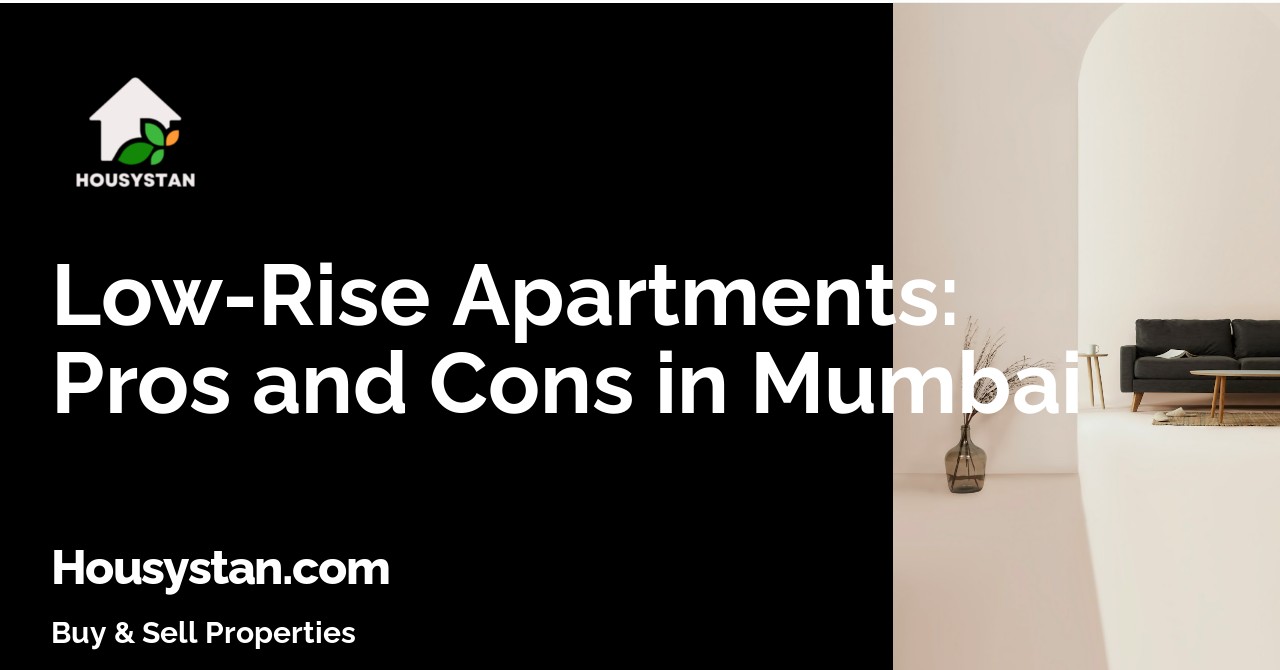Low-Rise Apartments: Pros and Cons in Mumbai
Read latest blogs and articles from Housystan

The Information mentioned here was last updated on:
31/12/2025Low-Rise Apartments: Pros and Cons in Mumbai
Choosing the right home in Mumbai, one of India’s most vibrant cities, can be a significant decision. Low-rise apartments have become increasingly popular among residents who seek a balanced lifestyle, blending convenience, comfort, and community. If you’re considering investing in or moving to a low-rise apartment in Mumbai, it’s essential to understand the unique advantages and potential drawbacks these properties offer, especially given the city’s dynamic real estate landscape.
Advantages of Low-Rise Apartments in Mumbai
- Verified Tenants/Buyers
- Unlimited Property Listing
- Zero subscription/charges fee
Low-rise apartments generally consist of buildings with three to four stories, offering a range of benefits for Mumbai residents. One of the primary advantages is the sense of community they foster. With fewer units per building, neighbors often develop closer relationships, resulting in a friendly and secure environment. Additionally, these properties usually feature more open spaces, landscaped gardens, and recreational areas, which can be rare in the city’s high-density neighborhoods.
Another significant benefit is accessibility. Low-rise buildings typically eliminate the long waits for elevators, making them ideal for families with young children, seniors, or anyone seeking ease of movement. Many low-rise apartments also provide better ventilation and natural light, contributing to a healthier and more comfortable living experience. Parking is often more convenient due to the limited number of residents, reducing daily hassles.
Potential Drawbacks of Low-Rise Apartments in Mumbai
Despite their appeal, low-rise apartments in Mumbai come with certain limitations. These developments may offer fewer amenities compared to high-rise complexes, such as swimming pools, gyms, or dedicated clubhouses. Security features might not be as advanced, and the absence of 24/7 surveillance could be a concern for some families.
Location is another factor to consider. Low-rise residential buildings are often situated in quieter, less central parts of Mumbai, which might mean longer commutes to business districts, schools, or entertainment hubs. Additionally, these apartments may experience higher demand due to their limited availability, potentially leading to increased prices or reduced options for prospective buyers and tenants.
Conclusion
Low-rise apartments in Mumbai offer a unique blend of tranquility, accessibility, and community living. However, it’s crucial to weigh the pros and cons based on your lifestyle preferences and daily needs. Whether you’re seeking a peaceful environment or prioritizing modern amenities, understanding the advantages and challenges of low-rise living in Mumbai will ensure you make an informed choice in this bustling metropolis.